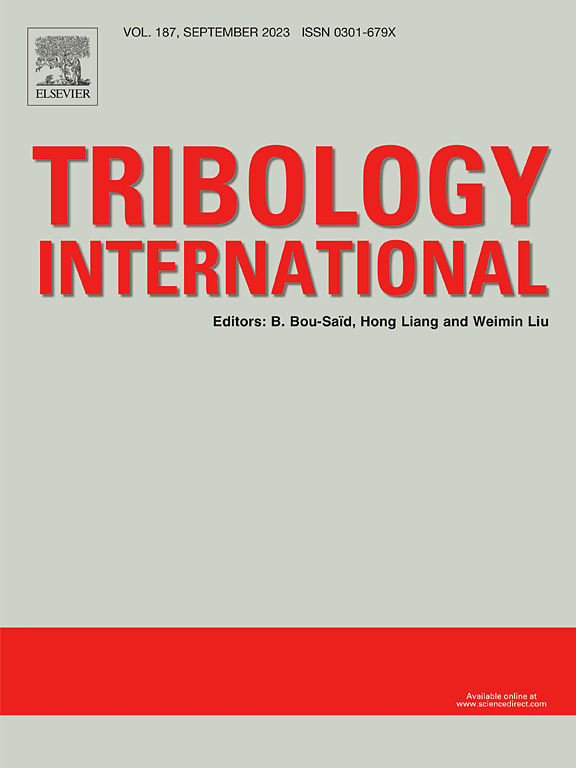Investigation of tribological behavior and failure mechanisms of PEEK-based composites, Babbitt alloy, and CuSn10Pb10 bimetal for wind turbine main shaft sliding bearings under simulated operational conditions
IF 6.1
1区 工程技术
Q1 ENGINEERING, MECHANICAL
引用次数: 0
Abstract
As wind turbine capacities increase, the demand for improved stability and reliability has intensified. Traditional rolling bearings used as wind turbine main bearings often prove insufficient under conditions of the low speeds, heavy loads, frequent start-stop cycles, and complex load environments, along with significantly high maintenance costs. Sliding bearings offer a promising alternative, yet research on high-performance materials tailored for Wind Turbine Main Shaft Sliding Bearings (WTMSSB) is limited. This study investigates the tribological behavior and failure mechanisms of several sliding bearing materials under complex operational conditions. Multi-condition friction and wear tests were conducted to evaluate the friction coefficient, friction temperature rise, and volume wear rate of Babbitt alloy (ZChSnSb11–6), bimetal CuSn10Pb10, pure PEEK, and the 10 % PTFE-filled modified PEEK composites. Scanning electron microscopy (SEM) and energy dispersive spectroscopy (EDS) were employed to analyze the microstructural features and elemental distributions on wear surfaces and wear debris. The 10 % PTFE-filled modified PEEK composite demonstrated superior self-lubricating properties and wear resistance under both lubricated and dry friction conditions, showing strong potential for complex load environments. While Babbitt alloy exhibited low friction under oil lubrication, its high wear rate and susceptibility to adhesive failure under dry conditions limit its applicability. Bimetal CuSn10Pb10 displayed consistently high friction and poor wear resistance across all conditions, with a tendency for seizure. This study provides robust experimental evidence for optimizing sliding bearing materials for WTMSSB and offers guidance for future material development and practical applications.
求助全文
约1分钟内获得全文
求助全文
来源期刊

Tribology International
工程技术-工程:机械
CiteScore
10.10
自引率
16.10%
发文量
627
审稿时长
35 days
期刊介绍:
Tribology is the science of rubbing surfaces and contributes to every facet of our everyday life, from live cell friction to engine lubrication and seismology. As such tribology is truly multidisciplinary and this extraordinary breadth of scientific interest is reflected in the scope of Tribology International.
Tribology International seeks to publish original research papers of the highest scientific quality to provide an archival resource for scientists from all backgrounds. Written contributions are invited reporting experimental and modelling studies both in established areas of tribology and emerging fields. Scientific topics include the physics or chemistry of tribo-surfaces, bio-tribology, surface engineering and materials, contact mechanics, nano-tribology, lubricants and hydrodynamic lubrication.
 求助内容:
求助内容: 应助结果提醒方式:
应助结果提醒方式:


